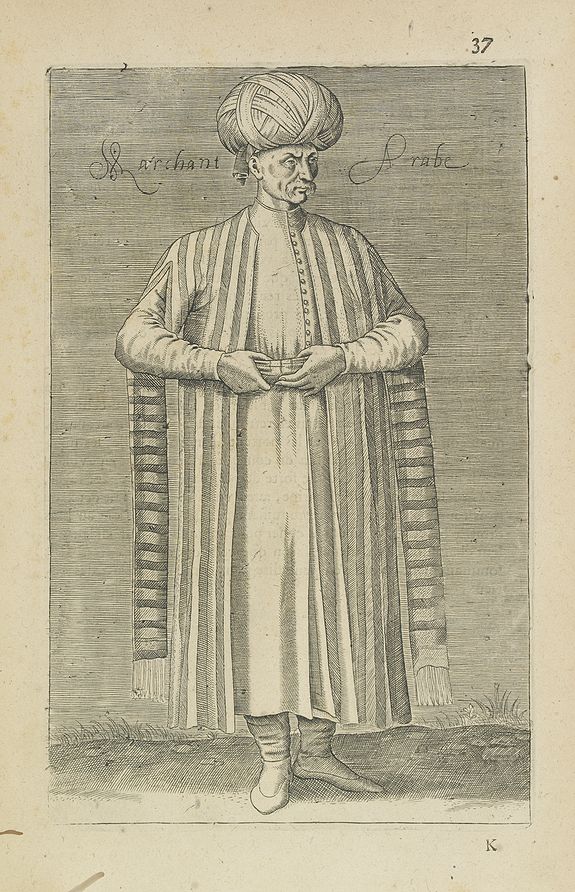Nicolas de Nicolay

Nicolas de Nicolay was a French geographer and traveler originally from the Dauphiné region. In 1556 he received the official title of "geographer of the king."
Nicolay had traveled extensively in northern Europe (Germany, Denmark, Livonia, Sweden, England, Scotland) for diplomatic missions. In 1551, Henry II ordered Nicolas de Nicolay to follow Gabriel Aramon, during an embassy to the Grand Turk Suleiman the Magnificent. During this trip, his mission was to undertake some informal surveying: the mission passed through Malta, Algeria, Tripoli (in Libyan) and the Greek islands.
He returned with 800 to 900 drawings of sites, cities, islands, ports, castles and fashion.
The original costume plates by Nicolas Nicolay were first published in Nicolay’s work "Les navigations peregrinations et voyages, faicts en la Turquie" (Lyon 1567). It was translated into various languages and left a deep mark on later publications on the same topic. Its success was largely due to the 60 (later expanded to 62) illustrations of the different costumes worn in the area Nicolay visited.
Subsequent works on the Turcs also included Nicolay’s illustrations, in woodcuts or engraved after the originals as in the Chalcocondyle’s editions.
Below we offer copper engraved plates from Laonikos Chalcocondyle’s "L'histoire de la décadence de l'empire grec et establissement de celuy des Turcs." by Thomas Artus d'Embry, after Nicolas de Nicolay. The Athenian Laonikos Chalcocondyle, who flourished in the mid-fifteenth century, and died around 1464, concentrated on the later period of the Byzantine empire.
His hisory was first published in a Latin translation in 1556. It was translated into French by the humanist Blaise de Vigenère in 1577.
The 1612 edition contains a long appendix on the costumes of Turkish magistrates and officers and of the peoples subjected to them. The engravings are made after designs of the sixteenth-century French traveler Nicolas de Nicolay, seigneur d’Arfeuille.